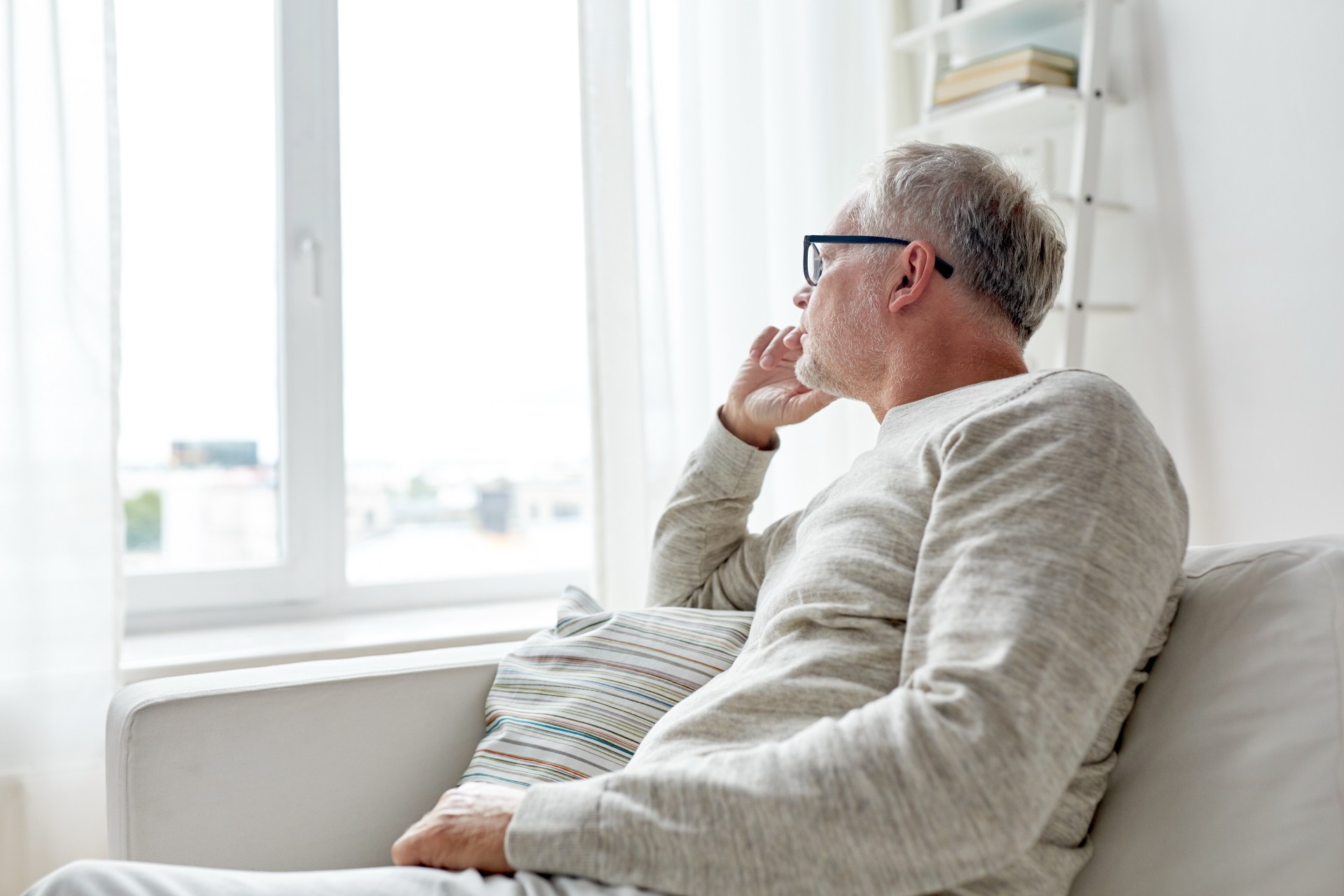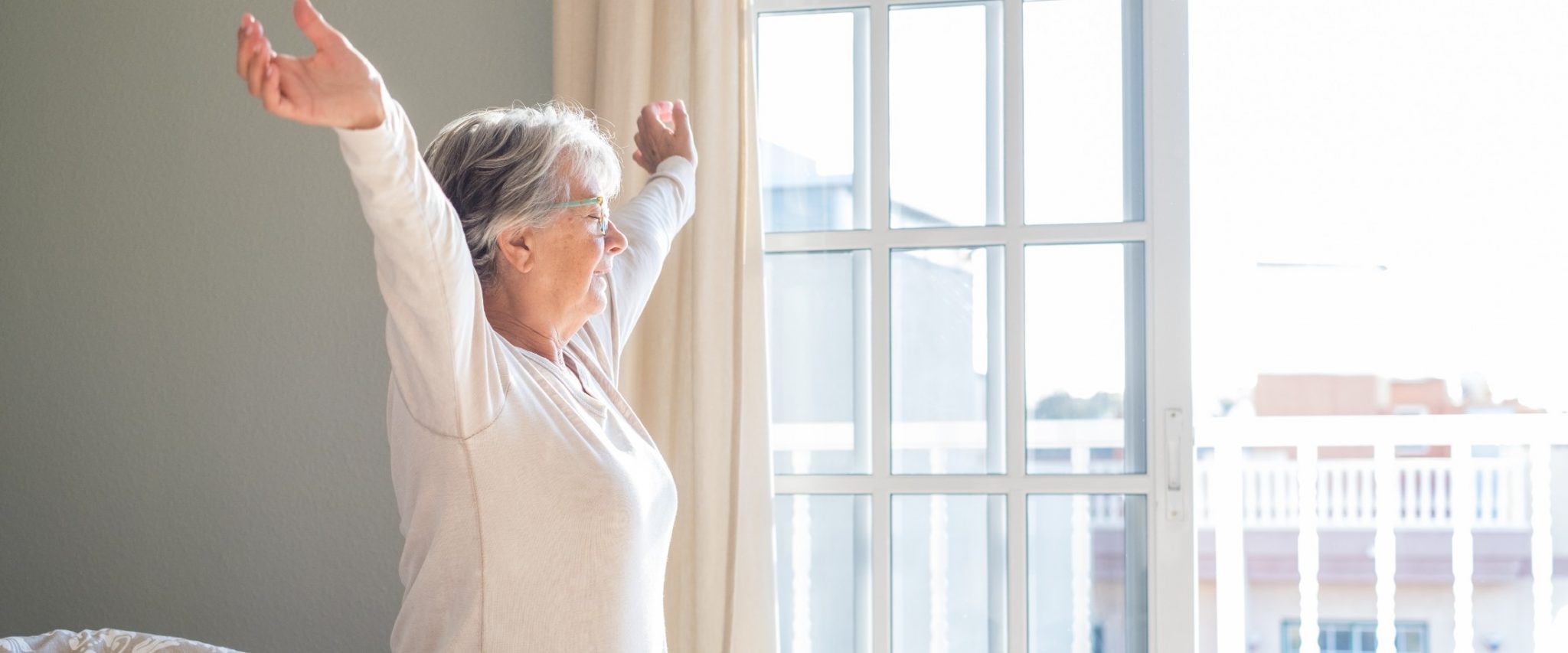Spotting Senior Isolation and the Effects of Loneliness

It’s a much-too-common issue many seniors struggle with: combatting feelings of loneliness and isolation. And with so many older adults living alone in the U.S. today, it’s a problem that often hides in plain sight.
A 2020 study found that nearly one-fourth of people 65 and older are considered to be socially isolated. Isolation and loneliness in the senior population is so pervasive it’s even considered a major public health risk.
Fortunately, both senior loneliness and senior isolation can both be managed, which can greatly improve older adults’ overall health and happiness — it can even improve their longevity.
Understanding the risk of senior isolation, loneliness
About 13.8 million older Americans lived alone in 2021. And while not all older adults who live alone are considered lonely or isolated, living alone can make it more difficult to establish or maintain the social connections human beings need to thrive.
Seniors considered to be most at risk of isolation and loneliness are those who find themselves unexpectedly alone due to the death of a spouse or partner, are separated from friends or family, have retired and don’t have enough to keep them busy, are suffering from loss of mobility, or lack transportation.
Health effects of isolation, loneliness in seniors
Losing a sense of connection and community changes a person’s perception of the world. Feeling chronically lonely is associated with higher rates of depression, anxiety and suicide.
Chronic loneliness can increase a person’s sense of mistrust in others, causing them to feel threatened. That “fight or flight” response triggers a biological defense mechanism that causes cells in the immune system to promote inflammation, a reaction that helps our bodies heal from injury. However, inflammation that lasts too long increases the risk of chronic diseases. Persistent stress increases inflammation that damages tissues and blood vessels, increasing risk of cardiovascular illness and death.
The Centers for Disease Control & Prevention says senior isolation and loneliness “act as fertilizer for other diseases,” increasing risk of premature death from all causes, including cancer and heart disease, at a risk level that may rival those of smoking, obesity and physical inactivity. Senior isolation and loneliness also increase dementia risk by 50%.
Common causes of senior isolation and loneliness
Feelings of loneliness and isolation have become emotions so many people have experienced since mid-March of 2020. The coronavirus pandemic has had a profound effect on nearly all human beings, regardless of age, ethnicity or socioeconomic status. Lockdowns, social distancing, stay-at-home orders, and unending anxiety, stress and uncertainty have caused what researchers have called the pandemic of loneliness.
Yet eventually human beings will learn to either vanquish or live with the coronavirus, finding ways to feel comfortable reconnecting with others in what’s become a “new normal.”
The same may not be true for many older adults, however. They may continue to struggle for reasons completely unrelated to the pandemic — reasons that were present well before the coronavirus emerged.
Society’s changing family dynamics have led to higher divorce rates and lower birth rates — meaning more seniors are single and childless, and have no family to lean on for emotional support.
Higher percentages of women are widowed or divorced, and live alone; in general, the number of adults who never married is at an all-time high, according to the U.S. Census Bureau.
Older LGBTQ adults are often at the highest risk of loneliness and isolation because they may never have had children, or may have long been estranged from their families.
Though seniors often choose to age in place at home, their neighborhoods change around them over the years. Familiar grocery stores and pharmacies close. Their neighborhood isn’t as walkable as it once was. Longtime neighbors die or move away, and younger neighbors move in, so common social connections like living in the same neighborhood erode.
Challenges with transportation have long been a cause of isolation for older adults. Aside from the fact many city neighborhoods are no longer accessible — with corner grocery stores and pharmacies replaced by big-box stores in the suburbs — seniors may no longer be able to drive and have no available transportation.
Older adults may feel left behind by a society that is so technologically focused. Smartphones, smart TVs, smart cars and so many devices and gadgets can make seniors feel out of touch and unable to navigate the world around them.
Some of these common causes of senior isolation and loneliness aren’t easy to address. But there are solutions families, friends and communities can implement to improve senior socialization and help older adults reconnect.
Ways to combat senior isolation and loneliness
Family, neighbors, and friends can schedule time on a daily or weekly basis to reach out to older neighbors or family members. It can be in person, by email, social media, voice call or text, and it can be as simple as asking, “How are you doing today?”
For seniors who feel uncomfortable with technology, families or younger neighbors can help set up and teach them communication technologies such as video chat, smartphones or smart speakers to foster engagement and connection.
Health care professionals are often among the few people older adults see on a regular basis. Doctors, nurses and even pharmacists can be part of older adults’ regular connections. They can also encourage their older patients to talk with a counselor, minister, or a mental health professional to share their feelings.
Sending regular cards, postcards, and letters is a wonderful way to both stay in touch with family members and have something to look forward to in the mail. Regular correspondence is an ideal way to nurture and strengthen existing relationships with friends and family who don’t live close by.
Adopting a pet is a wonderful way to build life-changing social connections (and pet adoptions are life-changing for the pets, too). Dogs, for example, can help encourage older adults to get outside for regular walks and engage in conversation with other dog owners. And studies show that owning cats, fish, and other pets can reduce stress and anxiety, lower blood pressure and improve social connection.
Many communities have local social service agencies, community and senior centers, and resources and programs available at public libraries, solely designed to engage its older adult residents. Older adults can easily be referred to any of these resources by their healthcare professionals.
Older adults can reach out to one another by inviting neighbors or friends to participate in group exercise, such as joining a walking club or fitness center. Exercise is good for keeping both body and mind active.Older adults can move into a socially focused senior living community. Senior living communities are designed to provide independent older adults with activities, events and opportunities that increase their social interactions and enrich their lives. Many communities also provide a continuum of care on the same independent living campus to care for the senior at every stage of life.
Consider a senior living community like Lake Port Square.
Lake Port Square offers Central Florida-area seniors a host of first-class services, amenities, and possibilities for older adults to enjoy more purposeful and socially connected lives. We’re even pet-friendly!If you’re wondering whether a senior living community might be right for you or someone you love, take our helpful assessment. Then contact us to learn how Lake Port Square’s welcoming, socially vibrant environment makes a positive difference in the residents who call our community home.




